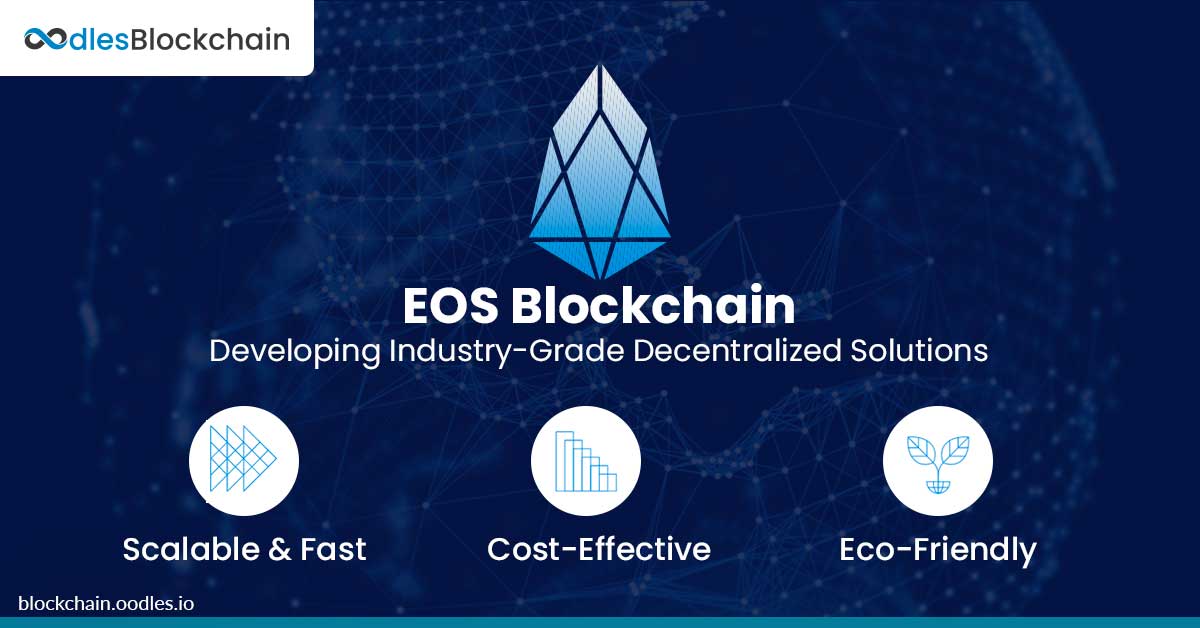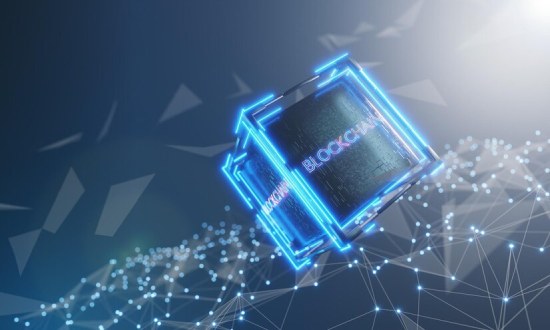-
The goal of EOS Blockchain development is to provide a decentralized operating system that can enable decentralized application development on an industrial scale. The following two statements are what caught the attention of the public:
- They intend to abolish the transaction fees altogether.
- They appear to have the capacity to carry out millions of transactions per second.
So, let's explore what's behind this hype. We'll talk about everything about EOS in this guide.
Why EOS
EOSIO or EOS is a platform for developing blockchain applications for the real world. Built for both public and private use cases, EOSIO is flexible to encompass a wide variety of business requirements across industries with rich roles-based security privileges, industry-leading acceleration, and secure application execution. Developing on EOSIO embraces common patterns of architecture and programming languages used by current non-blockchain applications, so developers can build a smooth user interface using development resources that they already know and love. Also, read | EOS Blockchain: Is It a Better Investment for DApp Development
Must-have Features for DApp Development
In the mainstream audience, many variables can make or break a dApp, and EOS has ticked some of the primary checkboxes to boost its popularity. The following list usually comprises the main success factors for every dApp: A Large User Base A dApp platform must be flexible enough to use easily and simultaneously by millions of users, without facing any performance issues. Free Usage A dApp on any blockchain platform should be free for end-users, with the ability to upgrade with ease. Any type of transaction fee would eventually discourage users from coming back to the dApp. Low Latency To have a good user experience, a dApp will run with the lowest possible latency. Parallel and Sequential Performance A dApp on any blockchain platform should offer the ability of parallel processing to distribute the workload and save time. Moreover, the dApp should allow for multiple sequential performances to avoid errors such as double-spending.
Key Features of EOS Blockchain
Scalability
Visa handles 1667 transactions per second while 193 transactions per second are handled by Paypal. Bitcoin handles just 3-4 transactions per second as compared to that, while Ethereum stands marginally better with 20 transactions per second. The explanation of why blockchain-based systems are unable to quantify so many transactions per second is that every node in the network needs to reach a consensus for something to move through. EOS says they can easily measure millions of transactions per second, as they use DPOS or the distributed proof-of-stake consensus mechanism. We're going to discuss the DPOS in a moment.
Flexibility
The entire network of Ethereum had come to a standstill due to the DAO attack. All stopped and because of the hard fork, the group was divided. Since EOS uses DPOS in their environment this is unlikely to happen again. If a DAPP is inaccurate, it can be frozen by the elected block producers before the system is looked after. This is essentially an extension of the DPOS scheme, and not every node is responsible for chain maintenance.
Usability
EOS enables well-defined permission levels by integrating features such as the interface creation web toolkit, self-describing interfaces, self-describing database schemes, and a declarative permission scheme.
Decentralized Operating System
This feature is perhaps the most important feature for really knowing what EOS is all about. Speak of a crypto-economic reward for macOS / Windows. Today, Ethereum is a supercomputer decentralized, with EOS positioning itself as an operating system. That in itself makes EOS, at least theoretically, a more oriented product
Less energy consumption
EOS is a much less energy-consuming platform compared to other consensus algorithms, with DPOS being the consensus framework for validating transactions.
Governance
The governance in EOS is established by creating authority and choice of law, combined with mutually agreed laws. It can be done by the legally binding Constitution. Each EOS transaction needs the hash of the constitution attached to the signature which effectively binds the users to the constitution.
Parallel Processing
EOS allows smart contracts to be processed in parallel through horizontal scalability, asynchronous communication, and interoperability. Let's get deeper into each of these terms:
How EOS Blockchain Works
EOS is somewhat close to Ethereum in its ability to host dApps and increase the number of transactions that the network can handle at any given time. The analysis of the blockchain strengthens its place because it increases the scalability. To boost its viability, the EOS blockchain uses a new consensus model, called Delegated-Proof-of-Stake (DPoS). This operates on a model of ownership where consumers can own and use resources that are proportional to their stake. This allows the user to hold a certain percentage of the stake and build freemium applications. EOS also allows its users to rent other developers or assign their share of resources.
Advantages of EOS Blockchain
- EOS comes with user accounts with a full-featured authentication method, various permission rates, and user data protected locally. Installed in the framework was recovery for compromised accounts and restore access.
- EOS has a server hosting and cloud storage feature added to encourage developers to build and deploy applications and access bandwidth from the EOS network. Staking EOS tokens can be used to access analytics directly from EOS and set limits for specific applications.
- Using consensus over events that concentrate on transactions, EOS will scale to one million transactions per second. Nodes check the sequence of events so far happening through this.
- The EOS app does not allow users to send messages and perform tasks on the blockchain through micropayments. App developers will agree on their monetization plan and transaction fees individually.
- Thanks to the governance model, the group will actively update and repair bugs in apps in a safe manner. This model is based on block producers capable of verifying which transactions are true.
- EOS maximizes efficiency by constructing each block that allows us to send and respond to messages and transactions within and between single blocks.
At present, EOS or EOSIO is the most widely used blockchain platform in the world. All of the Blockchain-based decentralized systems provide services with real-world functionality and advantages. EOS leads the charts not only in terms of gaming and gambling apps/software creation but also for a wide variety of other applications for uses such as ride-hailing, music streaming, activity monitoring, digital payment, and more.
Conclusion
EOS dApps have become easily quicker and more accessible alternatives to conventional blockchain apps. Based on current trends, EOS has emerged as a true advocate of blockchain technology and will bring enormous benefits to a large variety of business needs in the coming years. We hope this writing-up on EOS has provided you with a clear understanding of the different facets of blockchain technology in EOS / EOSIO. If you have a business case for a dApp that can be introduced using EOS or you would like to collaborate with a blockchain expert to further grow a nascent concept, please contact us and our team will support you.

Our Offices
INDIA
Emaar Digital Greens, Sector 61,
Gurugram, Haryana
122011.
Welldone Tech Park,
Sector 48, Sohna road,
Gurugram, Haryana
122018.














